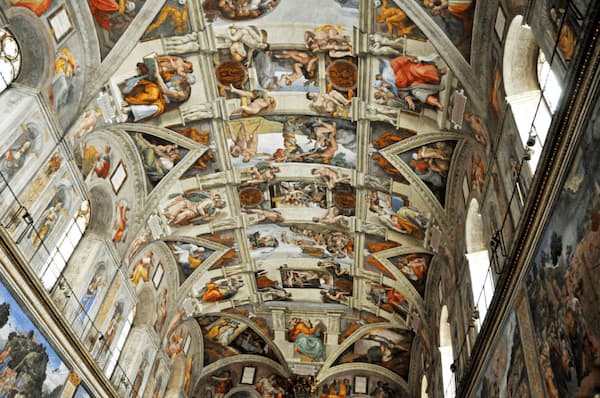Blogger Angela Chapell wrote in 2012 about one aspect of integrity. From Egypt to Paris and New York, then to Rome, this fascinating journey brings a thought-provoking challenge, especially for those of us in Christian ministry of any sort.

Oscar Hammerstein II wrote,
“A year or so ago, on the cover of the New York Herald Tribune Sunday magazine, I saw a picture of the Statue of Liberty, taken from a helicopter and it showed the top of the statue’s head. I was amazed at the detail there. The sculptor had done a painstaking job with the lady’s coiffure, and yet he must have been pretty sure that the only eyes that would ever see this detail would be the uncritical eyes of seagulls. He could not have dreamt that any man would ever fly over this head. He was artist enough, however, to finish off this part of the statue with as much care as he had devoted to her face and her arms, and the torch and everything that people can see as they sail up the bay.”
Built in France
Frederic Auguste Bartholdi was the sculptor. He went from France to Egypt in 1856 and was awestruck by the grandeur of the pyramids and the beauty of the stately Sphinx of the desert. His artistic mind was stimulated. Taken by the concept, he decided to design something out of the ordinary. He worked on the concept for ten years, changing the design many times until he was satisfied.
The result was a colossal robed lady that stood taller than the Sphinx. She held the books of justice in one hand and a torch lifted high in the other. After Bartholdi returned to France, the French government sought his artistic services. His ten years of planning and designing culminated in the Statue of Liberty lighting the New York Harbour.
The statue of Liberty was completed in France in July 1884 and arrived in New York Harbour in June 1885. In transit, the Statue was reduced to 350 individual pieces and packed in 214 crates. It was re-assembled on its new pedestal in four months. The dedication of the Statue of Liberty took place in front of thousands of spectators on October 28th,1886. President Grover Cleveland, the former New York governor, presided over the event.
No planes, no skyscrapers
The Statue of Liberty stands 305 feet 1 inch (93 metres) in height from the base to the top of the torch. No planes flew at that time. There were no high risers. It was not until many years later that aeroplanes were able to fly above it and the exquisite details and beauty of the top of the head could be observed. Bartholdi could have reasonably argued that such detail on the top was not necessary.
Why did he, on such a massive job, take so much trouble on something that he thought would never be seen? Why? Integrity!
The Sistine Chapel ceiling

We see another example of such integrity in the work of Michelangelo in his four years labour (1508-12) painting the very high ceiling of the Sistine Chapel. The painted area is about 40 metres (131 ft) long by 13 metres (43 ft) wide. This means that he painted well over 5,000 square feet (460 m2 ) of frescoes, carefully perfecting the tiniest details of each figure he painted.
A friend asked him why he took such pains, since the figures would only be seen from a great distance, and no one would be able to discern such perfection. The artist simply answered “I will!”
Integrity in our service
Why? Integrity! Integrity is more than not being deceitful or slipshod. For the Christian, it means doing everything “…heartily, as to the Lord and not unto men; knowing that of the Lord you shall receive the reward; for you serve the Lord Christ” (Colossians 3:23-24).
We are not called to build a sculptural masterpiece or a great work of art, but the same principle applies. If no one ever knows of our efforts, our work ethics should be the same.
When it comes to anything in Christian service, whether it is ministering to a lonely or needy person, or sharing the gospel message, or singing in the choir, or teaching children, or cleaning the church, or working behind the scenes, or playing a major role, or whatever we do, we should give 100-plus percent even to the tiniest detail which “no one will ever notice”. Our Father will, and we serve him.
You can visit Angela’s blog here.
This post was printed by FIRST, the magazine of The Faith Mission and is used here by permission.
Photos—Thanks to Flikr users Alan English (for his image of the Statue of Liberty) and Dennis Archer (for the one of Sistine Chapel ceiling)